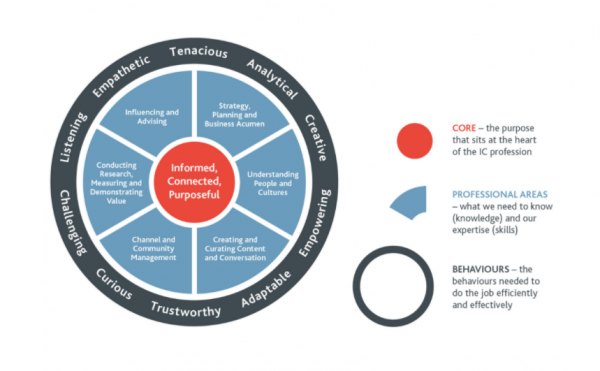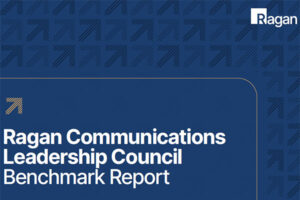How to master internal communication when you’re not a comms pro
Regardless of your training, education or background, you can make a positive difference on your team’s messaging.

Great communication plays such a central role in making organizations less chaotic—but it’s not always something business leaders, operations directors, commercial directors, CEOs or business owners think much about, and we should change that.
It’s vital for leaders to understand how communication can play a pivotal role in creating more efficient organizations and engaged teams. Here are a few insights for non-communications professionals and those looking to establish an internal messaging strategy for the first time.
Identify if you’re at a tipping point.
There’s usually a certain point in an organization’s growth at which internal communication is required. Although there’s no magic size that an organization has to reach, once you get to a certain number of employees, perhaps working at multiple locations, you may start to see symptoms of chaos that need addressing.
That chaos could be based in people on PTO, high employee turnover, a merger and acquisition, team friction issues or a loss of purpose. Left to run rampant, any of these can quickly turn into toxic chaos that hampers an organization’s ability to thrive.
If any of these symptoms ring a bell, that’s a good indication that you need to start thinking about your communication strategy and how you communicate inside your organization. Don’t shy away from the things you see are causing chaos; burying your head in the sand won’t help anyone.
Upskill, upskill, upskill!
It doesn’t matter whether you have 10, 20 or 50 employees—if there’s a lack of skilled communicators on the leadership team, things will start to break.
Leaders and business owners need to become much more aware of their communication style and the impact it has on others. Once you reach 80 to 150 people, that’s when you must also start looking at process and structure. We know from the history of human evolution that communities of over 150 people need a hierarchy in place.
Seek expert advice.
If this is your first foray into internal communications, I recommend using a consultant to help provide insight, understand what’s really going on and create your communications strategy, and then upskill or recruit a skilled communicator to deliver it. Often there just isn’t the budget to hire someone who will give that breadth of both strategy and execution, so this is a good route to take.
If you’re thinking, “people aren’t doing what we want them to do,” or “things aren’t quite right, but I don’t know why,” that’s when you need to bring in a consultant to help you identify that the issue. Don’t wait until it becomes a massive thorn in your side, because that’s much harder to extract and heal.
Identify where internal comms belongs in your organization.
Some see internal communication as part of HR. Yet, according to Gallagher’s State of the Sector 2020 report, it’s predominantly under the remit of corporate communication. Public relations as a discipline is closely linked to reputation management so, for me, internal communications sits under PR because, by definition, it’s about the publics of an organization—which includes employees.
I’ve worked in marketing functions, commercial functions and HR functions, and the name of the department often doesn’t make a huge difference: as long as you’re able to support the business strategy, that’s the most important thing.
Think about what’s in (and out of) scope for your communications function.
If you’re at a turning point as an organization, I encourage leaders to think about what they can’t do, shouldn’t do and hate doing when it comes to the day-to-day.
It’s not so easy to recognize what you shouldn’t be doing, but “can’t, hate, shouldn’t,” is a shift in mindset that allows you to assess gaps and recruit effectively. Otherwise, you can get pulled into doing things that are helpful, but not necessarily useful. Being clear about this will help your relationships internally, whatever function you work in.
Everyone needs to be a great (empathetic) communicator.
When it comes to the fundamentals for communication practitioners, the Institute of Internal Communications (IoIC) produced a profession map detailing the core skills, technical skills and behaviors needed to be an internal communicator.
I would argue that these skills are needed in all functions and levels of an organization; we should all develop these skills to thrive at work—no matter what role we do.

When I think about people who are great at communicating—whether they’re leaders, communications specialists, operations directors—the commonality across those individuals is empathy: That real understanding of the impact on people, that we all need to actively listen and exude integrity.
We need to hear more people say: “If I’ve said I’m going to do this, this is what I’m doing,” or, “I can’t do it and I’m going to be really honest and open about that.”
These are all skills that can be trained and coached. Some people will naturally be better communicators than others, but we can all build skills to better understand other people and communicate well.
Communicators need to be involved in the right conversations.
If you’re setting up a communications function, make sure the right people are involved in the right conversations. Don’t expect communicators to just produce endless content; they need to be strategically advising fellow leaders or the leadership team to listen and feedback.
Since strategies are constantly changing and organizations frequently divert their core focus, communicators need to be involved in the bigger questions around culture and organizational strategy: issues that are more on the business side than the people side.
Jenni Field is the founder of Redefining Communications. A previous version of this article appeared on the Redefining Communications blog.






